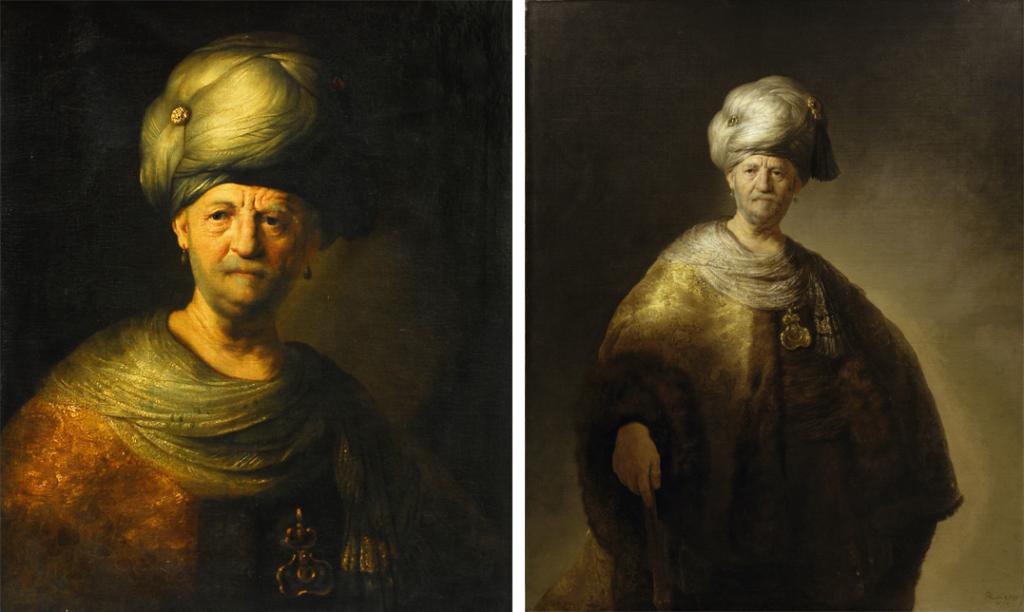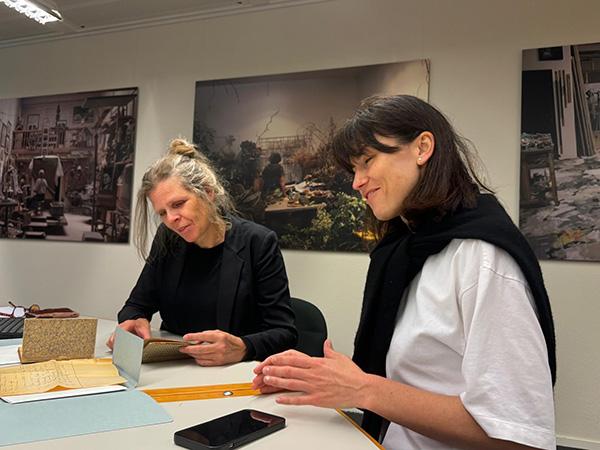Abraham Bredius in Kyiv

In 1897 Abraham Bredius (1855-1946), director of the Mauritshuis in The Hague, visited the collection of Bohdan (1849-1917) and Varvara (1852-1922) Khanenko in Kyiv. Full of enthusiasm he registered his impressions of the couple’s paintings in his notebook. Mariana Varchuk, research curator at the Khanenko Museum, recently visited The Hague to see Bredius’s notebooks, which are kept at the RKD.
Journey of discovery
At the end of the nineteenth century Abraham Bredius belonged to a select group of Rembrandt experts. His 1897 journey across Eastern Europe was meant to prepare for the great Rembrandt exhibition which was to mark the inauguration of Queen Wilhelmina a year later. During his trip, Bredius hoped to discover unknown paintings by Rembrandt with which he could create a sensation. His wish was granted, for in the castle of the Polish Count Tarnowski – following a tip from Wilhelm Bode, director of the Berlin Gemäldegalerie – he found the painting known as the Polish Rider. As Bredius noted in his travelogue in the Dutch literary magazine De Nederlandsche Spectator, Bode was keen to learn if this painting was indeed an authentic Rembrandt. Bredius did not need long to reach a verdict: ‘A quick glance at the whole work, a few seconds to examine the technique, were all I needed to be absolutely convinced that for almost 100 years, here in this remote place, had been hanging one of Rembrandt's greatest masterpieces!’ The effort he invested to come and see the painting in person was amply rewarded: in 1898 the Polish Rider was one of the highlights of the exhibition at the Stedelijk Museum in Amsterdam.

2. Rembrandt, Man in oriental costume, 1632, The Metropolitan Museum of Art, New York
The Khanenko Collection
When he visited the collection of the lawyer and sugar industrialist Bohdan Khanenko and his wife Varvara, Bredius did not come across any paintings by Rembrandt but he did identify two works that he considered close to Rembrandt’s style: ‘A portrait of [Rembrandt’s] Father [sic], with large turban, […] must be at least a very good copy’, he reported in his travellogue, and ‘a small head of a woman […] full of fine expression’. In addition to these two paintings, Bredius noticed many other interesting works in the Khanenko collection. Wearing his heart on his sleeve he recorded his first impressions: ‘P.[ieter] Brueghel Junior, group of travelling peasants, good and witty, a fat man and woman sitting on an (odd-looking) horse. Fine Jan Breughel. Exquisite flower piece fully sign.[ed] J. Breughel fecit’. And further down: ‘beautiful large J[an] D[avidsz.] de Heem r.[ight] chest, with red lobster on top, silv.[er] dish, jug, cut melon, etc. Could also be [Pieter] de Ring, very good’, and ‘Adorable small B[arent] Gael the finest, most beautiful work I have ever seen by him, who would have thought it (Sign.[ed])’. In total Bredius dedicated almost forty pages to the Khanenkos’ paintings. In 1917 Bohdan Khanenko bequeathed the collection to the City of Kyiv. The Khanenko Museum opened to the public two years later.
![Detail van een pagina in een van Bredius’ notitieboekjes waarin hij de entreehal van de ‘Gallerie Chanenko, Kiew’ beschrijft: ‘Vorstelijke entrée met ruiter in harnas op een levensgr.[oot] mooi gebeeldh.[ouwd] houten paard, hellebaarden enz. Kostelijk!’](/uploads/styles/auto_1024/public/2024-07/2%200001789000.jpg?itok=b38aBfBl)
Joining forces
Because of the Russian invasion, the Khanenko Museum has been forced to empty its museum rooms, taking away a considerable part of the normal day-to-day work of the staff. Therefore, it is of great significance to join forces and explore new directions. A heart-warming initiative by the Hoogsteder Museum Foundation in The Hague has already paved the way: 31 paintings from the Hague School are currently on loan to the Khanenko Museum for the exhibition The Hague-Kyiv. Paintings of the Late Nineteenth and Early Twentieth Centuries from the Collections of the Hoogsteder and Ponamarchuk Families. The RKD is also keen to seek cooperation, not only to provide moral support to our Ukrainian colleagues but above all to underline the universal right to a cultural identity. Long-term research into the history of the museum and its founders by the Khanenko Museum team led by Olena Zhyvkova, curator of European painting, can now be extended to include the newly discovered material. The RKD was therefore delighted to receive a visit from Mariana Varchuk, research curator at the Khanenko Museum.
